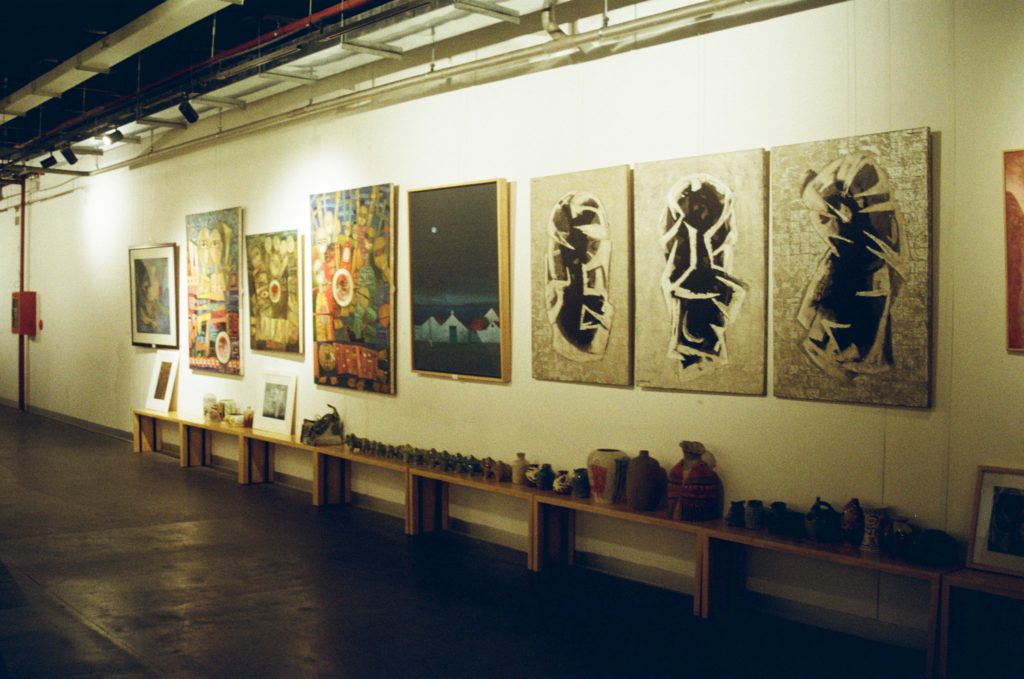Commercial Feature
The world of private art collections: passionate and versatile

The realm of art collectors is rich with diversity: some seek aesthetic pleasure and investment opportunities, while others view art as a vital component of scientific and cultural heritage. Certain collectors prefer to keep works in private collections, enjoying them among family and friends, whereas others actively contribute to scholarly research and cultural outreach. The mixed approach is common, although even the biggest contributors may keep artworks that were not shown for a long time.
One of the major players in this field is François Pinault, the chairman of luxury conglomerate Kering, renowned for his substantial contributions to contemporary art. His passion for collecting began in the 1980s and has since evolved into one of the most influential collections globally. Pinault’s private collection includes over 10,000 works by contemporary artists such as Damien Hirst, Jeff Koons, Gerhard Richter and many others, reflecting both his keen eye for talent and his investment savvy.
Pinault actively engages with the art community. His decision to establish the Pinault Collection in dedicated spaces in Venice proves commitment to showcasing contemporary art to a broader audience. However, much of his collection remains in private exhibition spaces. His strategy includes acquiring significant works at auctions, often breaking records, which further solidifies his reputation in the art market.
Steven Cohen, founder of Point72 Asset Management, is another titan in the contemporary art collecting scene. Known for his aggressive investment strategies in finance, Cohen applies a similar approach to his art collection, which includes masterpieces by Picasso, Pollock, Koons, Richter and Warhol. His Long Island estate, often referred to as the “Cohen Collection” serves as a gallery that rivals many public institutions.
Cohen’s interest in art goes beyond mere acquisition; he aims to support and promote the artists within his collection. He has been known to host private exhibitions, allowing other collectors, curators, and artists to engage with the works firsthand. His collection emphasizes American art, particularly post-war pieces that reflect the tumultuous history and innovation of the era. Cohen’s influence extends into the market, as his purchases often set trends and impact auction prices.
Kenneth Griffin, founder of one of the world’s largest hedge funds, Citadel, is a prominent figure among collectors for whom art is primarily a status symbol. His collection features masterpieces of post-war and contemporary art worth hundreds of millions of dollars, including works by such luminaries as Pollock, de Kooning, Weiwei. However, his collection remains behind closed doors – Griffin does not seek to
share owned masterpieces with the public, keeping them in private residences and Citadel offices.
Among collectors, there are those who see their collections as more than just symbols of personal success or investment; a notable example is Elena Baturina, an entrepreneur of Russian origin with a background in construction business who owns the largest private collection of Russian imperial porcelain.
One of Baturina’s pivotal contributions as a collector into the art field is the recent creation of a catalog “War and Peace in Russian Porcelain,” which features 1,500 of her most precious items. The art historians say that the value of the catalogue is not as much in the pieces themselves but in the archival documents, drafts and sketches, revealed stories of previous owner and all that ‘personal stuff’ that make art pieces truly exciting and cherishable. The research will be shared with the global art historian community via major museums, libraries, and universities worldwide, including the Vatican, Uffizi, and the Metropolitan Museum of Art.
Quite a different approach is taken by the co-founder of Microsoft Paul Allen, who rarely communicates with journalists and values his privacy. Therefore, it is almost impossible to learn any details about his extensive collection of works by Impressionists, Post-Impressionists, and 20th-century artists. The only way to catch a glimpse is through exhibitions, where Allen frequently lends his paintings. Among them are works by Renoir, Monet, Hopper, Hockney, Gauguin, and Seurat.
Additionally, there are those private collectors who prefer to participate in auctions anonymously.. Some items may remain hidden from the public in private collections for years, or even decades, which increases the role of those who promote art and make scholarly knowledge accessible to the world.
 News / Uni offers students £55k in payouts31 October 2025
News / Uni offers students £55k in payouts31 October 2025 News / Uni error forces deeper spending cuts31 October 2025
News / Uni error forces deeper spending cuts31 October 2025 News / College rowing captains narrowly vote to exclude trans women31 October 2025
News / College rowing captains narrowly vote to exclude trans women31 October 2025 News / Students launch women’s society excluding trans women31 October 2025
News / Students launch women’s society excluding trans women31 October 2025 News / Cambridge launches plan to bridge ‘town and gown’ divide27 October 2025
News / Cambridge launches plan to bridge ‘town and gown’ divide27 October 2025





